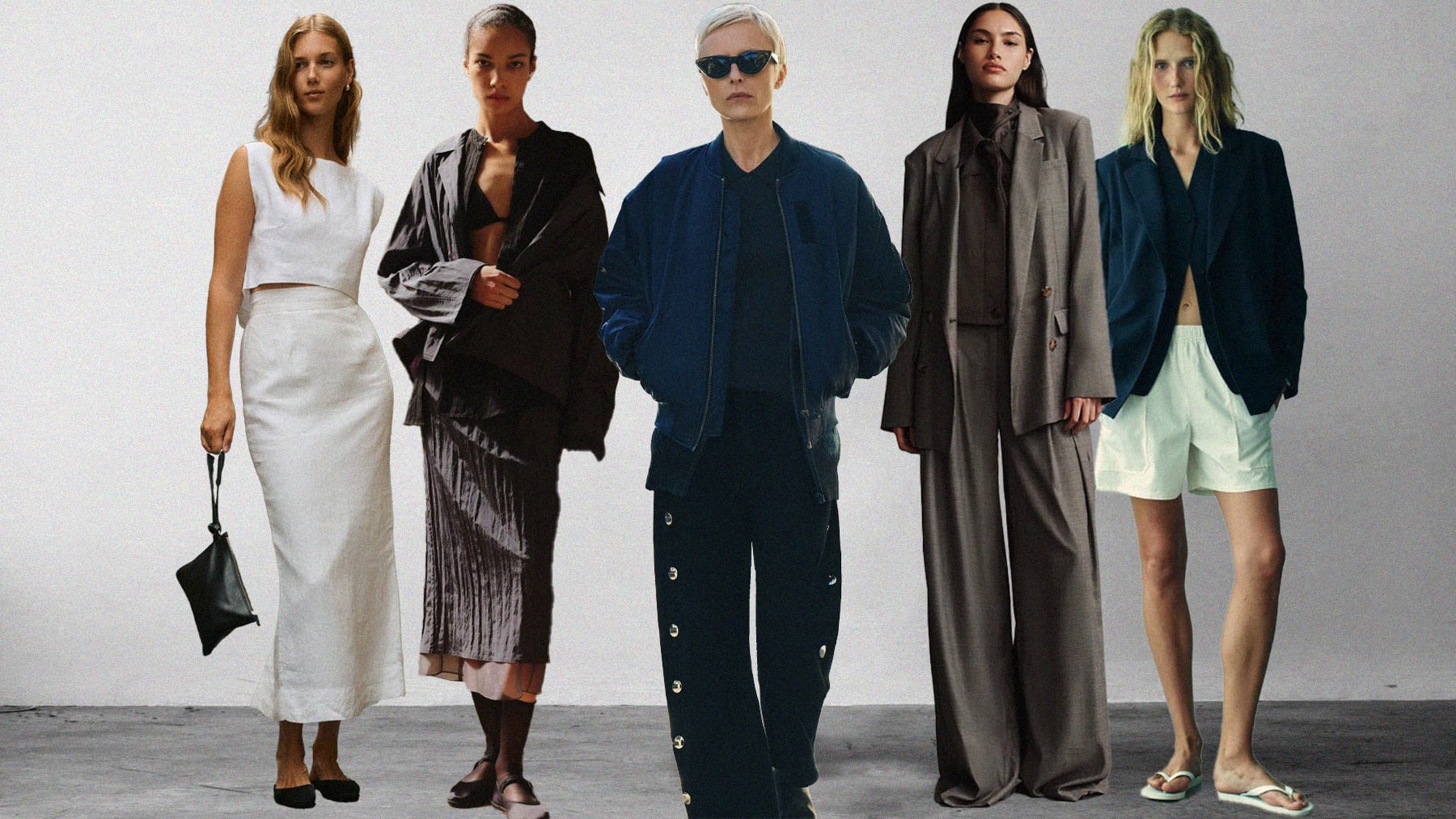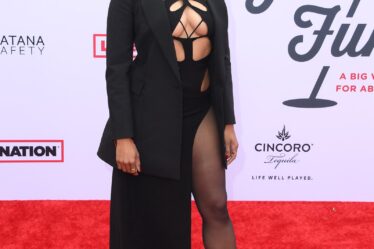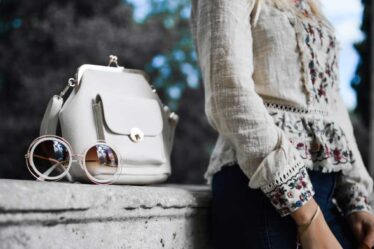
Kirna Zabête founder Beth Buccini had never seen a new brand click with her store’s customers so quickly.
In the spring of 2023, the downtown New York boutique began carrying the womenswear label TWP, founded by former Theory designer Trish Wescoat Pound. By the end of that year, Kirna Zabête had sold 2,500 of the brand’s shirts, one of the highest sell-throughs Buccini had seen for an emerging label. She increased her order fivefold this year.
TWP’s proposition isn’t revolutionary: it sells elevated basics, such as crisp “boyfriend” shirts and wide-leg pleated trousers in neutral hues. But it resonates.
“Once somebody buys it, they want more and more and more,” Buccini said. “It’s such a great fit, you feel polished and put together, that’s what people are looking for.”
Quiet luxury’s moment in the zeitgeist may be over, but the trend left in its wake a thriving market for minimalist, approachably chic clothes with just the right amount of design — a black blazer with a uniquely-cut lapel, say, or a jersey top with an intricately-draped neckline. No brand has capitalised more on that desire than Mary-Kate and Ashley Olsen’s The Row, which last month raised a funding round that valued the brand at over $1 billion.
The Row, along with Khaite, the New York luxury label that received an investment from Stripes last year, and the fast-growing contemporary brand Toteme, form something of a holy trinity. The Row’s annual revenues are estimated above $250 million; Khaite and Toteme have both surpassed $100 million.
Each has carved its own niche within the broader aesthetic: The Row is the pinnacle of minimalism, with a focus on tailoring (its name is a reference to London’s famed Savile Row). Khaite is slightly more bold, with exaggerated details like wide shoulders and oversized fits. Toteme offers Scandi-inspired pieces, including a whipstitched jacket with a built-in scarf, and thick striped turtleneck sweaters.
Behind those three are a rapidly expanding cohort of brands, mostly American and mostly founded or designed by women, promising sumptuous fabrics and a no-frills look with a high-fashion sensibility. For those who can’t afford a $1,500 cashmere sweater from The Row or Khaite, there’s Posse, Leset, Roucha and The Frankie Shop which offer knitwear for about a fifth of the price. Others, including Australian brand St. Agni, Los Angeles-born Co, New York-based labels Kallmeyer, Nili Lotan, Attersee and TWP fall somewhere in between those price points. The list goes on.
Some of these up-and-coming brands are breaking through – TWP is on track to double sales to around $30 million this year. Still, the proliferation of minimalist labels does beg the question: How many more brands can find success with their spin on the perfect pair of jeans, beige sweaters or a classic black blazer?
The momentum is with the minimalists. In September, Leset, which sells dressy knit loungewear, opened its first store, in New York’s West Village. Kallmeyer, known for its sophisticated crew neck button-up jackets, staged its debut runway show at New York Fashion Week. TWP and Posse are both considering new categories, including leather belts and handbags, respectively, while St. Agni is launching eyewear and swimwear before the end of the year.
Like The Row and its ultra-luxury peers, the new class of women-led upstarts are selling a state of mind as much as a comfy sweater.
“It’s a new question: is luxury dictated by price point? I think that’s a dated notion,” said Pound. “Luxury is giving women really well made clothes in the best fabrications, making those clothes have a lot of function, making them have a lot of utility, making women feel good in them.”
Dressing the Modern Woman
Fashion has a long history of female designers blending form and function. Coco Chanel helped lead the charge to casualise women’s clothing, ridding them of restricting corsets. In the 1990s, Donna Karan created corporate-ready pieces for a generation of women that was entering the workforce in greater numbers than ever before. As creative director of Céline, Phoebe Philo’s modern approach to chic simplicity changed how women wanted to dress.
For this latest generation of brands, inspiration, similarly, comes from their founders’ own sartorial desires — which are often shared by their target consumer. Kallmeyer’s founder Daniella Kallmeyer wanted to create suiting that didn’t feel quite so corporate. The idea for Attersee — a brand that emphasises sleek tailoring mixed with casual knitwear — founder Isabel Wilkinson Schor said, came from her own experience getting dressed for her eight-plus hour days as a T Magazine editor.
“I didn’t want to look too trend driven, and frankly, couldn’t wear a full designer price point every day,” said Wilkinson Schor. “I was really seeking something that was comfort-driven, polished, easy and approachable, but elevated. It was a very personal need that I was filling.”
And while well-made, well-designed essentials are always in fashion, they feel particularly relevant right now. Luxury’s biggest brands have raised their prices, putting many items out of reach for all but the wealthiest shoppers. When aspirational customers do shop at the top of the market today, they are looking for timeless pieces they’ll be able to wear year after year — a desire underscored by the resurgence of ‘90 minimalist style icons like the late Carolyn Bessette-Kennedy in the online discourse.
At the same time, wardrobes have relaxed since the pandemic. There’s more of a need for clothes that are “responsive to everyday life,” as Wilkinson Schor said, but still make you look good. The same woman who might have bought a pair of Jimmy Choo stilettos for the office 15 years ago might instead invest in a great cashmere sweater, or a formal-yet-comfortable pair of trousers.
The look is relatively timeless, but it will evolve — the width of a pant leg, or how fitted a shirt is. Direction is often informed by the customer. Wilkinson Schor attends events throughout the US where she meets customers face-to-face; Kallmeyer spends time in her brand’s Orchard Street store on New York’s Lower East Side to speak to shoppers. These women’s innate understanding of their consumer is shaped by the fact that they deal with the same fashion pain points themselves.
“If I can remove the friction of time getting dressed in the morning from my customers, I’m giving them clarity,” said Kallmeyer.
Customers return the favour through strong word of mouth. Attersee has invested no money into digital advertising; Australian minimalist brand St. Agni waited five years before establishing a marketing budget. Substack writers in particular, like Jess Graves of The Love List and influencer Courtney Grow, have been vocal proponents of the style.
“It’s not just a black blazer, it’s the perfect black blazer that every time you put it on, it drapes exactly right and you feel like a million bucks,” said Graves.
Choose Your Own Growth Path
While The Row, Khaite and Toteme have taken outside investment, most of the smaller minimalist brands coming up behind them haven’t. Some founders say they aren’t looking to build the next billion-dollar brand, either.
Jill Wenger, who founded Roucha and serves as creative director, says she wants to stay small, with sales under $20 million, to avoid compromising her vision when making decisions such as adding a new colourway or introducing a new product category.
“I’m definitely not chasing a number,” said Lara Fells, co-founder of St. Agni, which has not raised outside investment. “It’s more just growing a business and putting out products that we’re really proud of.”
Still, there is a model for how to grow a minimalist brand: often they start with a hero product they feel is missing in the market, then once the core collection has momentum, add in accessories.
Leset, for one, started with casual, but office-appropriate tops and bottoms and grew its audience with relaxed cotton t-shirts, cardigans and boxer pants. Last year, it added leather-soled slippers and is planning to introduce handbags in the next three to four years, said founder and chief executive Lili Chemla. Attersee tests out new categories with a single product to gauge interest; with bags, it began with its Brea style, a small crescent-shaped bag, before rolling out its Ven bag, a larger version, this fall.
These brands are nimble and respond to consumer desires, too. Posse, for instance, discontinued its own bag collection early on after its 2016 launch amid increased competition from more established labels offering similar silhouettes. The brand introduced a slouchy, drawstring handbag for its holiday collection this year, a category it plans to ramp up in the next year, said founder and creative director Danielle Mulham.
Standing Out
The new generation of brands’ biggest task is to prove they are different enough to become household names in their own right.
The Row has a secretive, fashion insider aura that alluringly contrasts with its super famous founders. Khaite and Toteme both have developed their own identifiable angles on making minimalism contemporary and cool.
Summer Holl, president of Elysewalker, an independent multi-brand luxury retailer that carries brands like The Row, TWP and Kallmeyer, believes “there is a space for each of them in the door, they’re not cannibalising each other.” But brands are still honing their own point-of-view, trickier to do when you’re making essentials that typically don’t have logos.
Kallmeyer said that it helps when you’re selling to a customer that cares about the little things, like a slimmer sweater sleeve that will stay up after the wearer pushes it up their arm, a feature she’s incorporated.
“I might be making a navy cashmere sweater, but the details of how it forms on your body are very Kallmeyer coded,” she said. “The luxury is in the details.”
Maintaining differentiation will help labels win loyal customers and build long-lasting businesses.
“Just because there’s more of an interest in the ‘classics,’ doesn’t make them any less classic,” said Graves. “They’re going to endure even after people move on from this conversation, and the people who are shopping this way are still going to shop this way.”



